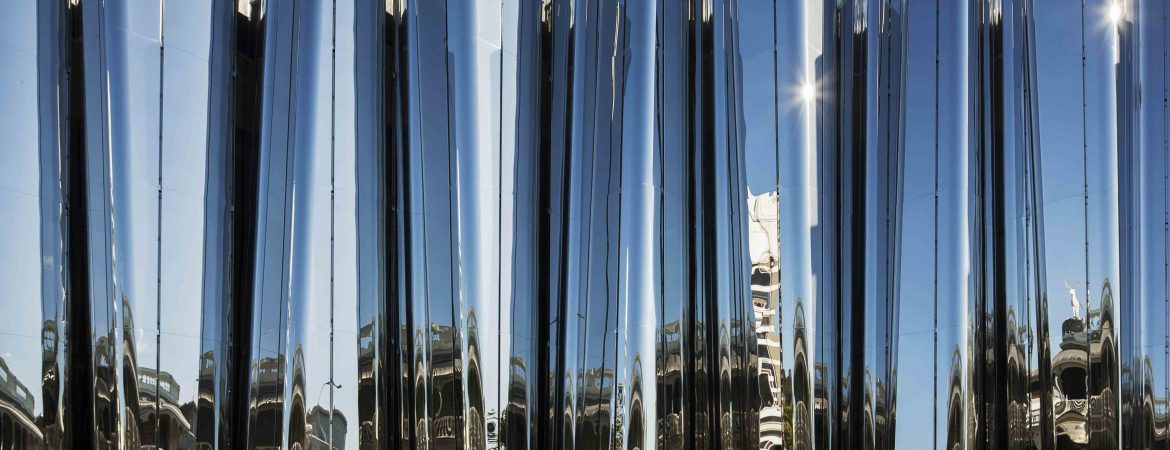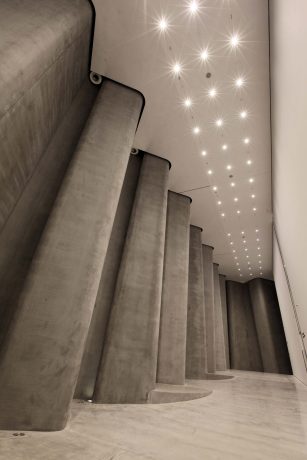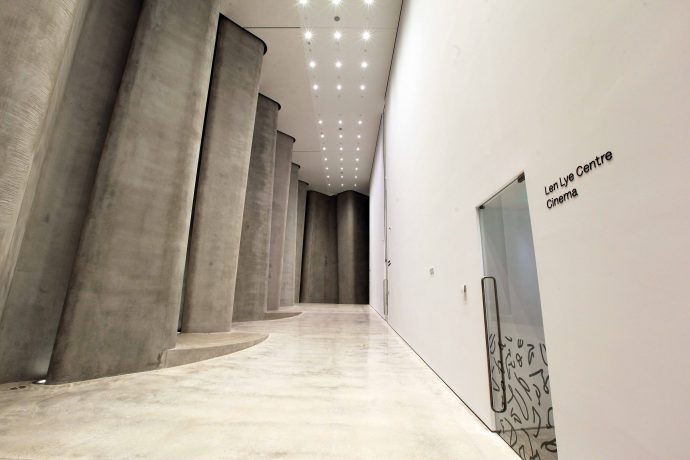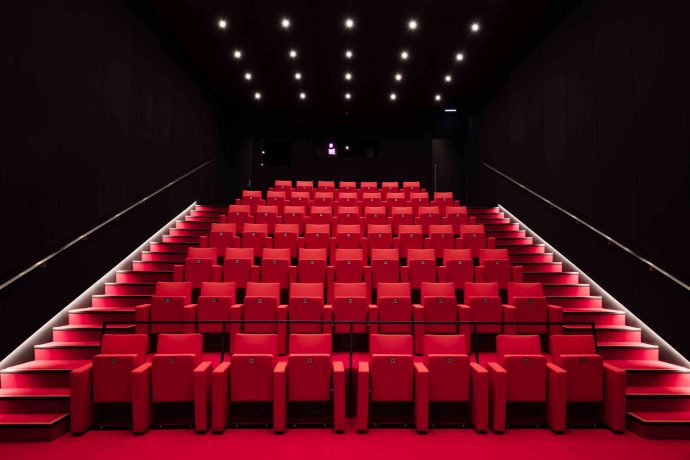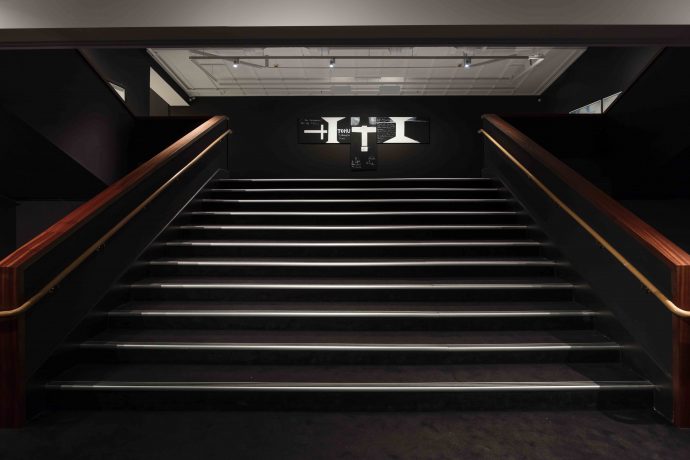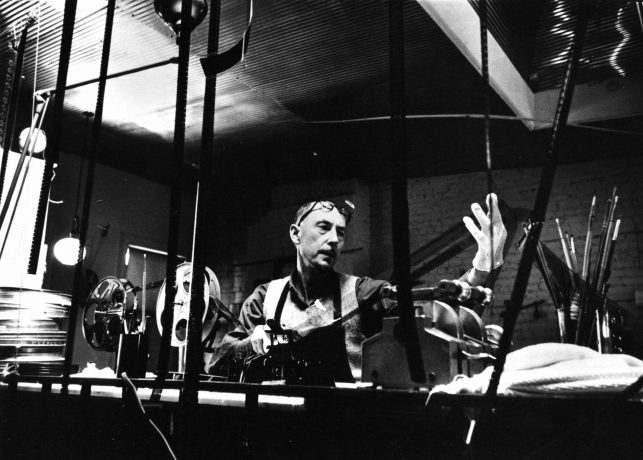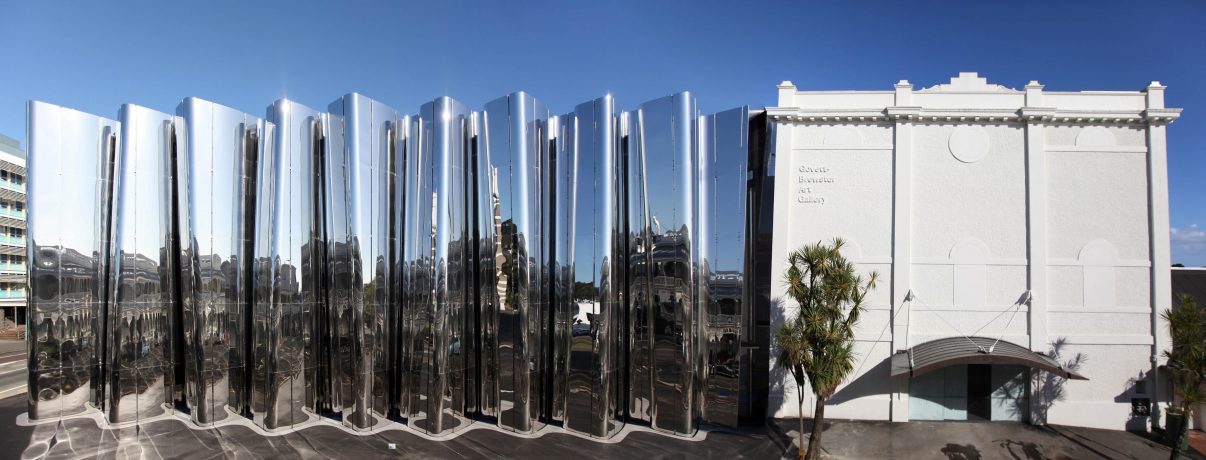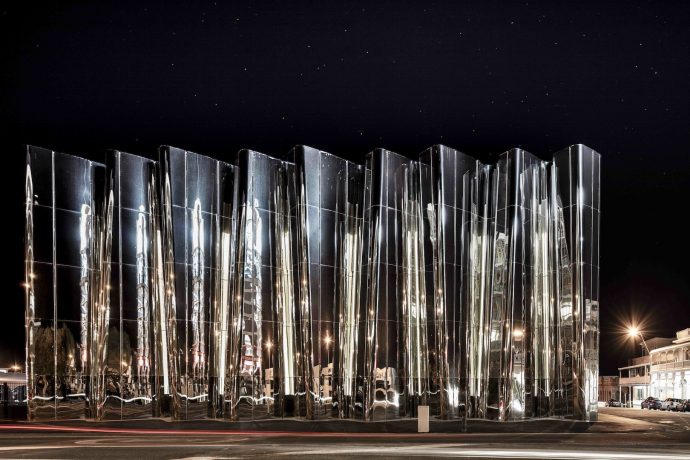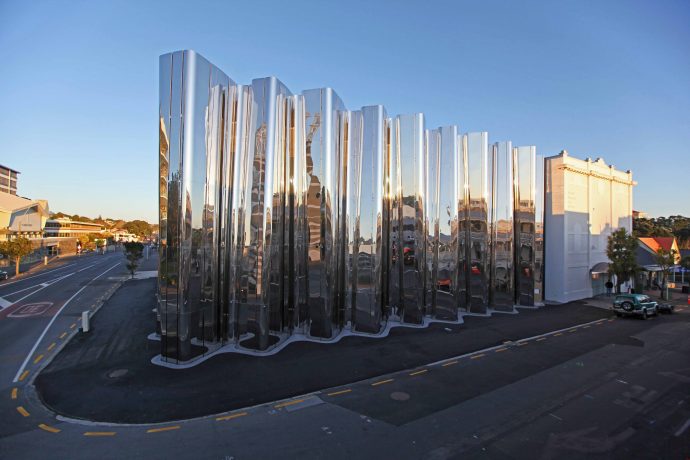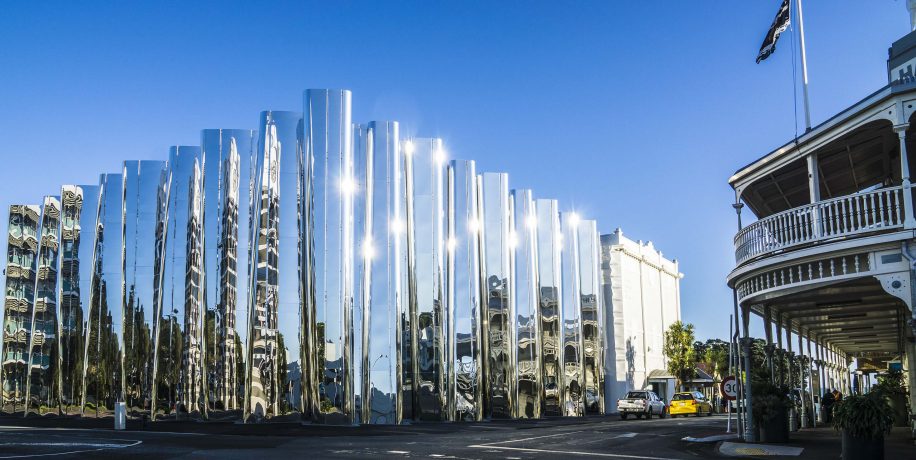New Zealand has always been a magical and fascinating place, with its exceptional scenaries and lands. We all know them too well, as most of us have experienced them through the trilogy of Lord of the Rings, which were all filmed there.
However New Zealand isn’t only the setting for high-fantasy movies but also for some breathtaking and unique architecture. The Len Lye Centre building, by Patterson Associates, adjascent to the Govett-Brewster Art Gallery is the newest addition to the architectural landscape of Aotearoa, New Zealand. The building is the only “single artist museum” in the country and was deeply inspired by the artists works, writings, ideas and of course his life. Leonard Charles Huia “Len” Lye (1901-1980), was especially known for his experimental films and kinetic sculpture.
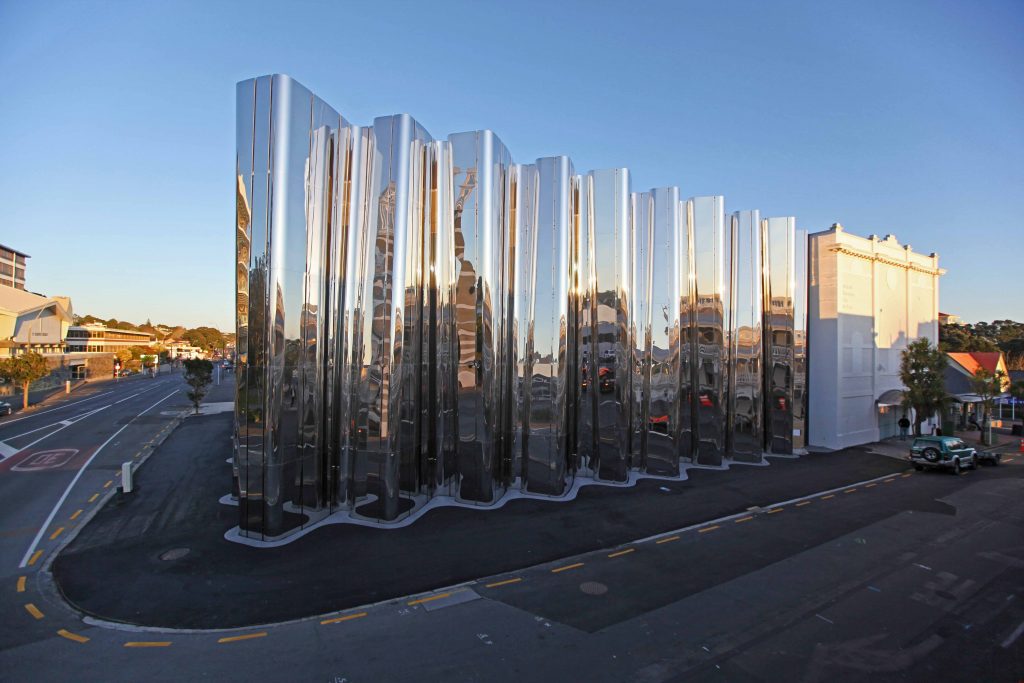
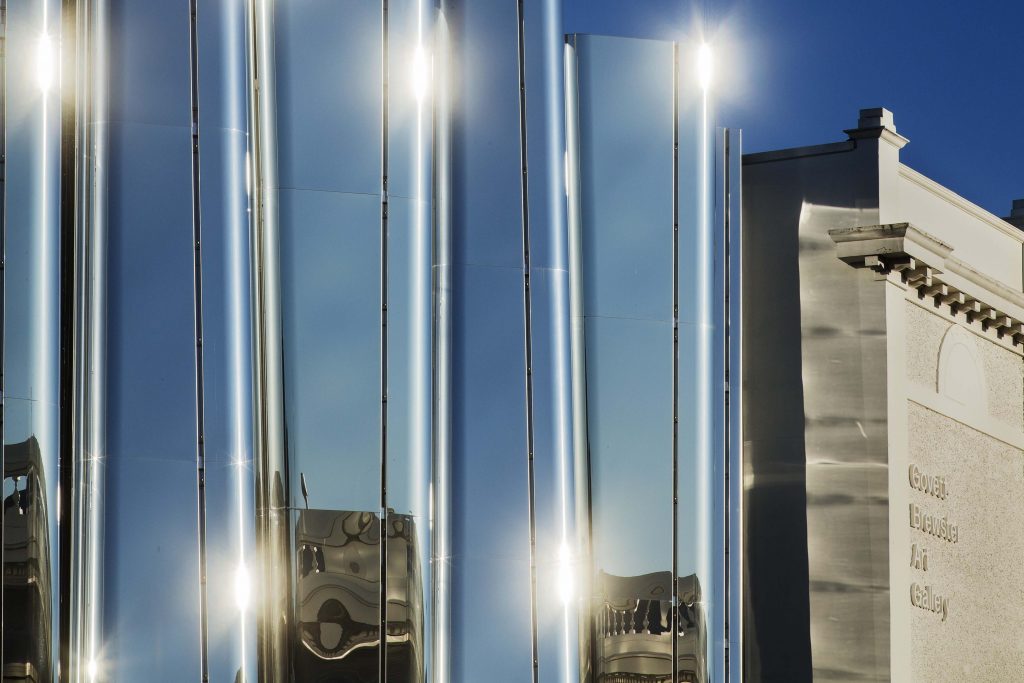
The movement of light often seen in his films and sculptures, was the source of inspiration for this unique and stunning centre. The waving and curved stainless teel façade, produced locally, reflects the natural light off the building throughout the day and shimmers prominently in its setting. This doesn’t only celebrate the artists work and influence but also the Taranaki region’s role as a leading innovator in stainless steel engineering.
Pattersons Architectural Statement
It was Lye himself who said in 1964 that “great architecture goes fifty-fifty with great art”, a maxim that has informed the approach and form of the Patterson Associates-designed Antipodean Temple that houses his work. Lye was fascinated with temples and in conceiving the overall design it seemed aesthetically and historically appropriate to draw inspiration from the ‘megarons’, or great halls, of the classical world, as well as Polynesian forms and ideas. These also influenced Lye and he is, after all, the client.
To do this in a new way, we developed our thinking in a holistic or adaptive way, using what we call ‘systems methodology’.
This means that rather than using proportion or aesthetics, we use patterns in the ecology of the project’s environments to drive the design elements.
The colonnade creates a theatre curtain, but with three asymmetric ramped sides, leading to a type of vestibule, known as ‘pronaos’ in Ancient Greece. This is formed by the gallery holding the large Lye works. Viewed from above, the colonnade’s top edges create a koru form, displaying the Museum’s Polynesian influences as the meeting house, or wharenui, for Len Lye.
Attentively the Len Lye Centre links into the existing, yet smaller, Govett Brewster Gallery, which recently has been modified from the city’s decommissioned heritage cinema. Both facilities are combined by a circular loop, allowing the visitors to take in the museum and gallery displays, which constantly change, within one flexible and common space.
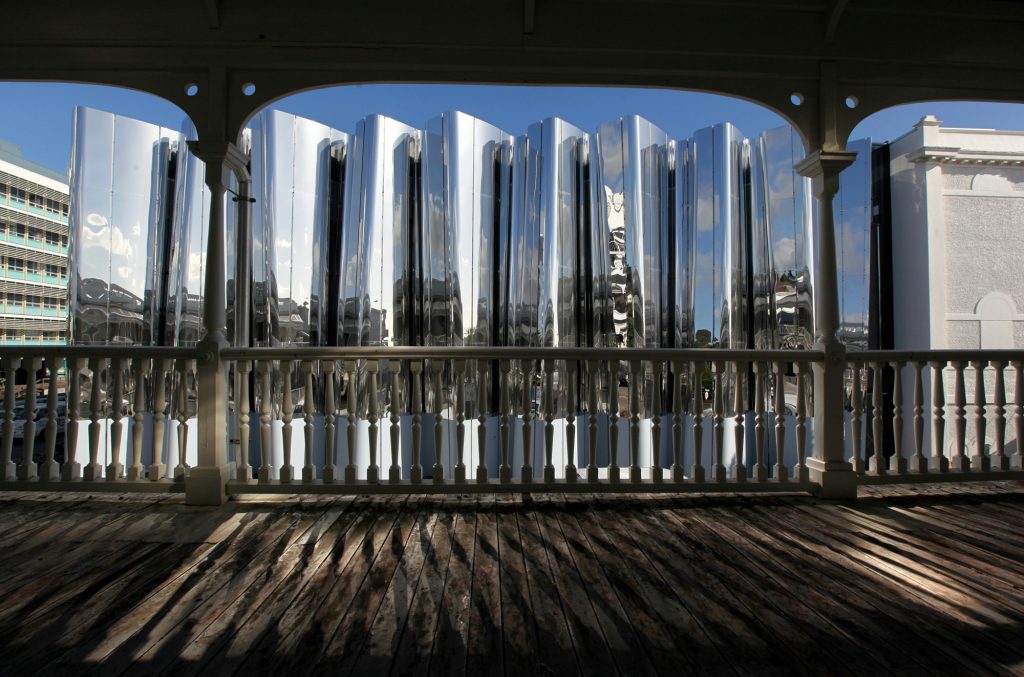
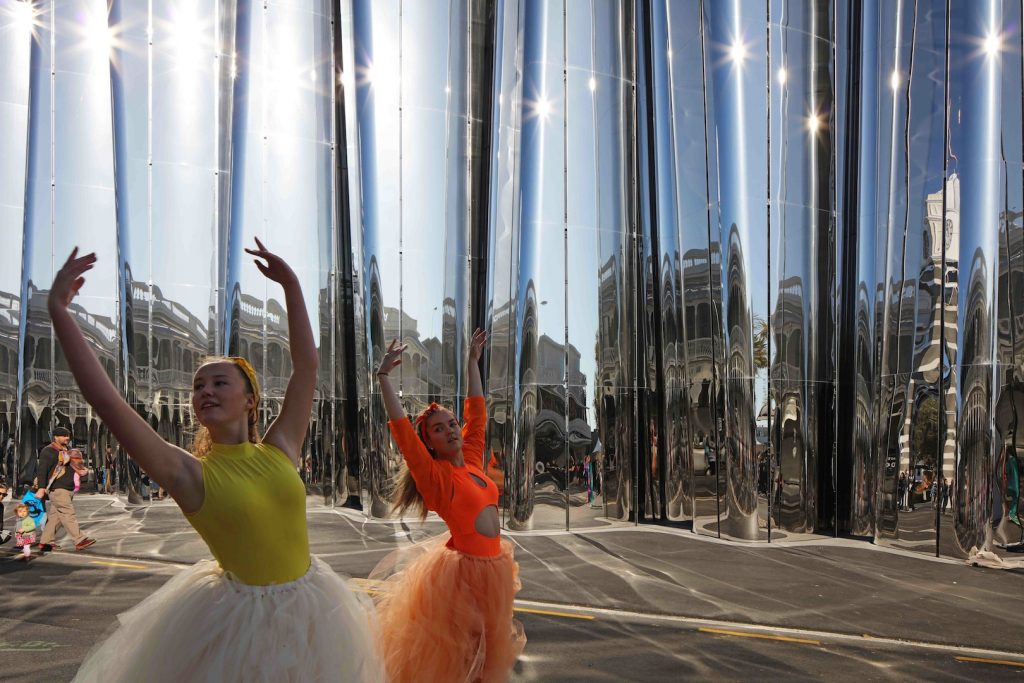
The architects hoped to challenge “the dominance of pure modernism in contemporary thought”. In our humble opinion they have accomplished to incorporate the spirit of the artist, and enriched it with meaning. It is with their innovative, smart and sensitive approach that Patterson Associates have created yet another magical environment for New Zealand, one that you must SEE and experience, when given the opportunity.
